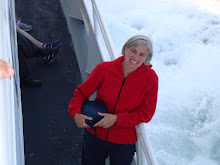
By Jacqueline Kelly
Publisher: Holt
ISBN-13: 978-0-8050-8841-0
FROM THE FLAP: The summer of 1899 is hot in Calpurnia’s sleepy Texas town,and there aren’t a lot of good ways to stay cool. Her mother has a new wind machine from town, but Callie might just have to resort to stealthily cutting off her hair, one sneaky inch at a time. She also spends a lot of time at the river with her notoriously cantankerous grandfather, an avid naturalist. It turns out that every drop of river water is teeming with life, all you have to do is look through a microscope.
As Callie explores the natural world around her, she develops a close relationship with her grandfather, navigates the dangers of living with six brothers, and learns just what it means to be a girl at the turn of the century.
Debut author Jacqueline Kelly deftly brings Callie and her family to life, capturing an unusual year with unique sensitivity and wit.
BIRD FEEDERS (Visual/Spatial)
Callie feeds the birds in her yard. Have students make bird feeders. If you want a simple fast activity, give the students string and donut-shaped cereal. Make a cereal necklace and hang outside for the birds. For a more complex activity, use milk or juice cartons. Here’s a good link to check out for more detailed information: http://www.crafty-moms.com/make-bird-feeders.shtml
CLASS AWARD (Interpersonal)
Make a class award that will be passed on from one student to another each week just like Callie’s family had a FENTRESS FIREFLY PRIZE. The award could be for using a “wow” word in writing, an impressive open response math explanation, or any concept you’re trying to teach.
EGG TOSS (Bodily Kinesthetic)
Callie’s grandfather doesn’t want to damage specimens when he collects them. Divide the class into teams of four for a relay race. Each team member has to carry an egg on a spoon to the finish line and back without the egg breaking.
LETTERS TO THE EDITOR (Verbal/Linguistic)
When Callie writes to the local newspaper, not only does the newspaper write back, but they begin to include the temperature in the shade. Read your local paper and write a letter to them praising one of their articles or suggest a change that would improve the paper.
MICROSCOPE OBSERVATIONS (Naturalist)
Collect samples from different water sources: lake, pond, river, marsh, swamp or ocean and look at each underneath a microscope. Record your observations. Using the results you’ve found, design a science experiment and use the scientific method to test your hypothesis.
NATURALIST NOTEBOOKS (Visual/Spatial and Naturalist)
Once a week take the class outside to sketch something in their natural environments. If you’re in a rural area, opportunities abound, but even in an urban area there are different options. Check out this blog post http://celebratescience.blogspot.com/2009/11/good-morning-maple_23.html for photos and observations of Maple trees. Don't forget about the sky and the different types of clouds, too.
BOOK BUDDIES:
-Darwin and Evolution for Kids: His Life and Ideas with 21 Activities by Kristan Lawson
-Fire in the Hole by Mary Cronk Farrell
-How Do You Know It’s True?: Discovering the Difference Between Science and Superstition by Hyman Ruchlis
-Keeper of the Doves by Betsy Byars
-My Name is America: The Journal of Fin Reardon A Newsie by Susan Bartoletti

Thanks for sharing this debut novel. I love to read historical fiction, especially the time period of this book. I'm going to the library today to check this one out!
ReplyDeleteHi Kate,
ReplyDeleteThanks so much for mentioning my book "Fire in the Hole" If you have any further interest I have a cross curriculum teachers guide posted on my website.
Hi Clara,
ReplyDeleteThanks for sending me your book HILL HAWK HATTIE. I look forward to reading it during vacation.
Hi Mary,
ReplyDeleteThanks for letting me know about your teachers guide. I'll check it out.